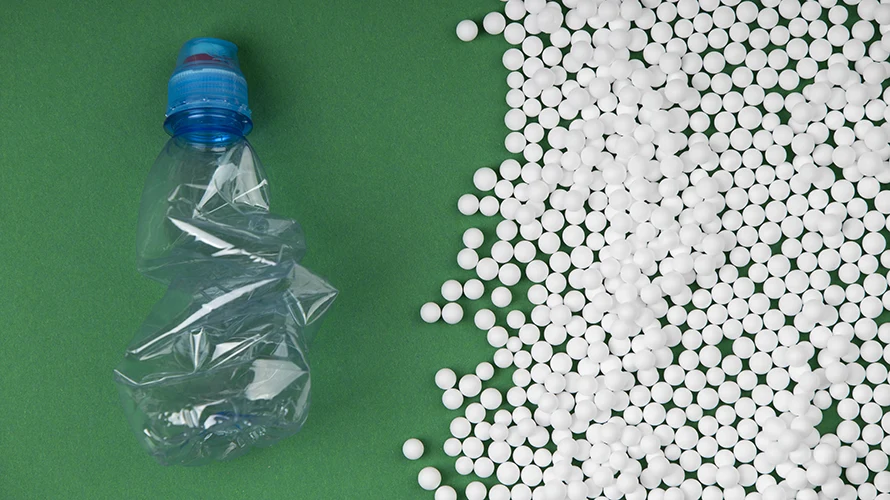Is PLA Plastic Biodegradable

Founder of UKPACK, Chief Packaging Designer with 18 years of experience, Red Dot Award Winner
Specialize in custom, innovative, and sustainable packaging solutions for cosmetics, skincare, personal care, hair care, food and beverage, and more.

- Was ist PLA-Kunststoff?
- Kurze Geschichte und Verwendung von PLA-Kunststoff
- Bedeutung der Berücksichtigung der biologischen Abbaubarkeit von Kunststoffen
- Ist PLA-Kunststoff biologisch abbaubar?
- PLA-Kunststoff im Vergleich zu herkömmlichen Kunststoffen
- Kompostierung von PLA-Kunststoff
- Missverständnisse über die biologische Abbaubarkeit von PLA-Kunststoff
- Alternative biologisch abbaubare Materialien
- Fazit
Plastic waste is a global issue that has serious environmental consequences, with millions of tons of plastic polluting landfills and oceans every year. In recent years, there has been a growing interest in biodegradable plastics as a potential solution to this problem. Polylactic acid (PLA) plastic, made from renewable resources such as cornstarch, has emerged as a promising alternative to traditional plastics.
However, there is a lot of confusion and controversy surrounding the biodegradability of PLA plastic.
In this blog post, we will explore the question, “Is PLA plastic biodegradable?” and provide a comprehensive overview of the scientific studies, controversies, and challenges related to PLA plastic’s biodegradability.
We will also compare PLA plastic to traditional plastics, examine the process of composting PLA plastic, address misconceptions about its biodegradability, and explore alternative biodegradable materials.
By the end of this post, you will have a clearer understanding of the potential of biodegradable plastics, the complexities of their biodegradability, and the steps you can take to promote a sustainable future.
Polylactic acid (PLA) plastic is a type of biodegradable plastic that is made from renewable resources such as cornstarch, cassava, or sugarcane. It is a versatile material that can be used for a wide range of products, including food packaging, disposable cutlery, and 3D printing.
Brief History and Use of PLA Plastic
PLA plastic was first developed in the 1990s as an alternative to traditional petroleum-based plastics. It quickly gained popularity due to its biodegradability and renewable nature. Today, PLA plastic is widely used in the food industry and in the production of eco-friendly consumer products.
Importance of Addressing the Biodegradability of Plastics
The accumulation of non-biodegradable plastics in landfills and oceans is a major environmental issue. The development of biodegradable plastics such as PLA has the potential to reduce the environmental impact of plastics and create a more sustainable future.
Is PLA Plastic Biodegradable?
What is biodegradability
Biodegradability is the ability of a material to be broken down by microorganisms such as bacteria and fungi into natural substances such as water, carbon dioxide, and biomass.
Different types of biodegradability
There are two types of biodegradability: aerobic and anaerobic. Aerobic biodegradation occurs in the presence of oxygen and produces carbon dioxide and water. Anaerobic biodegradation occurs in the absence of oxygen and produces methane gas and other organic compounds.
Scientific studies on the biodegradability of PLA plastic
Several scientific studies have been conducted to test the biodegradability of PLA plastic. These studies have found that PLA plastic can biodegrade under certain conditions, such as high temperatures and in the presence of specific microorganisms.
Controversies and challenges on the biodegradability of PLA plastic
While PLA plastic is biodegradable, there are concerns about the efficiency of its biodegradation in real-world conditions. Factors such as temperature, moisture, and the presence of microorganisms can affect the biodegradation of PLA plastic. Additionally, PLA plastic may not break down completely and can leave behind microplastics that can still be harmful to the environment.
PLA Plastic vs. Traditional Plastics
Comparison of PLA plastic and traditional plastics
PLA plastic is often compared to traditional petroleum-based plastics. While both materials have similar properties, PLA plastic has a lower environmental impact due to its renewable nature and biodegradability.
Environmental impact of traditional plastics
Traditional plastics are made from non-renewable resources such as petroleum and natural gas. These materials take hundreds of years to biodegrade and can release harmful chemicals into the environment.
Advantages and disadvantages of PLA plastic
The advantages of PLA plastic include its renewable nature, biodegradability, and versatility. However, its disadvantages include its high cost of production, limited availability, and the challenges associated with its biodegradability.
Composting PLA Plastic
Definition and process of composting
Composting is the process of breaking down organic materials such as food waste, yard waste, and biodegradable plastics into nutrient-rich soil.
Requirements for composting PLA plastic
In order for PLA plastic to be composted, it must be broken down into small pieces and exposed to high temperatures and specific microorganisms. Composting PLA plastic requires specialized facilities and cannot be done in a backyard compost pile.
Benefits and challenges of composting PLA plastic
Composting PLA plastic can help reduce the environmental impact of plastics and create nutrient-rich soil. However, the lack of infrastructure and facilities for composting PLA plastic is a major challenge. There are only a limited number of commercial composting facilities that are capable of composting PLA plastic, and these facilities are not widely available in many areas.
Another challenge is the fact that PLA plastic can only be composted under specific conditions. If the composting conditions are not met, the PLA plastic may not break down properly, which can lead to environmental harm.
Despite these challenges, there are some benefits to composting PLA plastic. For example, composting PLA plastic can help reduce the amount of plastic waste that ends up in landfills and oceans. Additionally, composting PLA plastic can create nutrient-rich soil that can be used for gardening and agriculture.
Misconceptions about PLA Plastic Biodegradability
Common misconceptions about PLA plastic
There are several common misconceptions about the biodegradability of PLA plastic. One of the most common misconceptions is that PLA plastic is biodegradable in all environments. In reality, PLA plastic can only biodegrade under specific conditions.
Another misconception is that all PLA plastic is compostable. While some types of PLA plastic are compostable, not all are. It is important to check the packaging or product information to determine whether a particular type of PLA plastic is compostable.
Addressing and debunking these misconceptions
To address these misconceptions, it is important to educate consumers about the specific conditions required for PLA plastic to biodegrade and compost. It is also important for manufacturers to clearly label their products and packaging to indicate whether they are compostable and under what conditions.
Additionally, there needs to be greater investment in composting facilities and infrastructure to ensure that PLA plastic can be properly composted and diverted from landfills and oceans.
Alternative Biodegradable Materials
Overview of other biodegradable materials
There are several other biodegradable materials that are being developed and used as alternatives to traditional plastics. These include materials such as starch-based plastics, cellulose-based plastics, and biodegradable polymers.
Advantages and disadvantages of these materials
Each of these materials has its own advantages and disadvantages. For example, starch-based plastics are renewable and can be composted, but they are not as strong as traditional plastics and can be more expensive to produce. Cellulose-based plastics are made from renewable sources and are biodegradable, but they may not be suitable for all applications.
Future of biodegradable materials
The development of biodegradable materials is an important step towards reducing the environmental impact of plastics. As technology and innovation continue to advance, it is likely that more sustainable and biodegradable materials will be developed.
Conclusion
PLA plastic is a biodegradable plastic that has gained popularity as a more sustainable alternative to traditional plastics. However, there are challenges to the biodegradability of PLA plastic, including the lack of infrastructure for composting.
While PLA plastic is not a perfect solution to the problem of plastic waste, it is a step in the right direction. By educating consumers and manufacturers about the conditions required for composting PLA plastic and investing in composting infrastructure, we can work towards a more sustainable future.
Individuals and businesses can take steps towards a more sustainable future by reducing their use of traditional plastics, choosing biodegradable alternatives such as PLA plastic, and properly disposing of biodegradable plastics in composting facilities when available. Together, we can work towards a more sustainable future for ourselves and for future generations.
